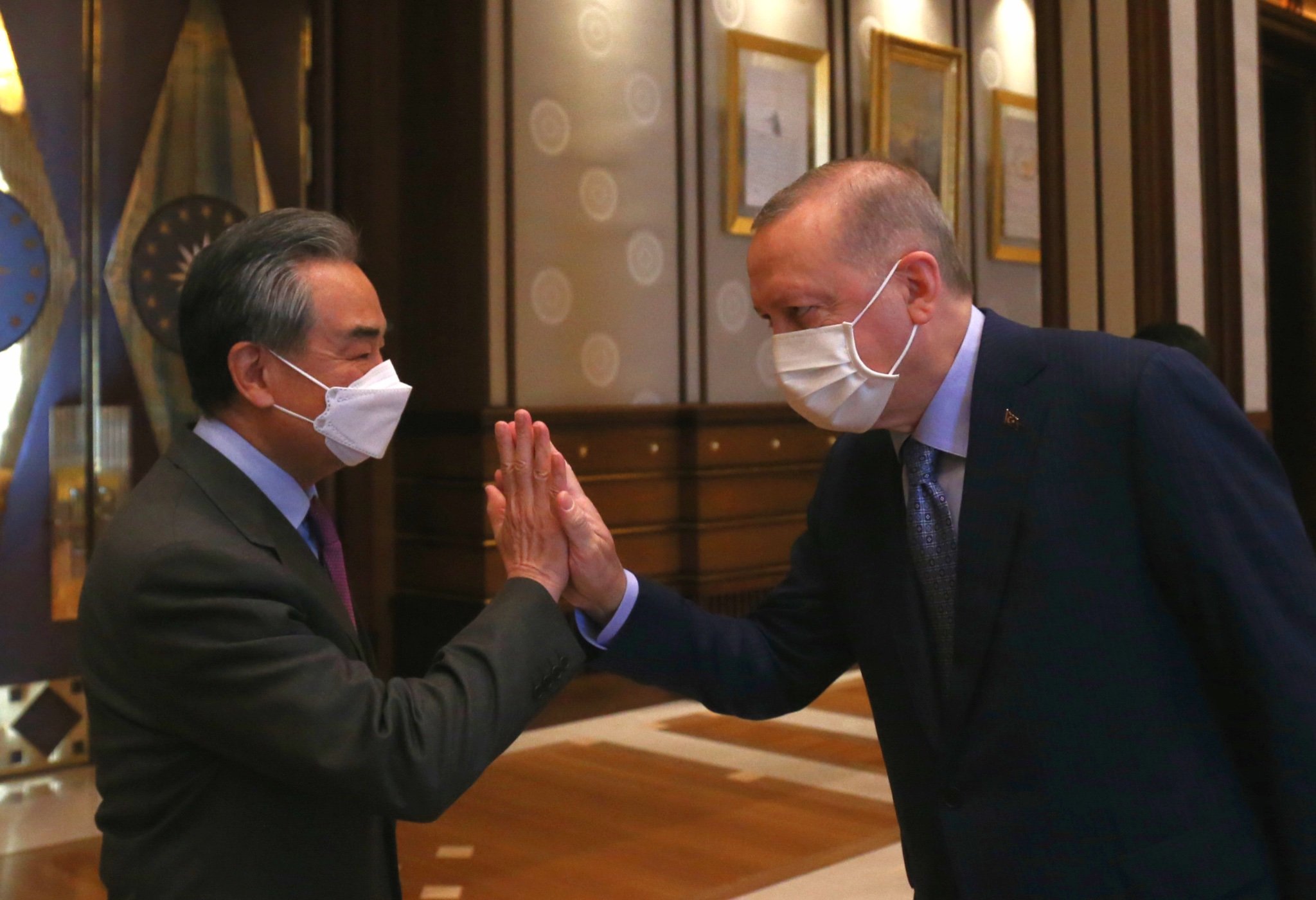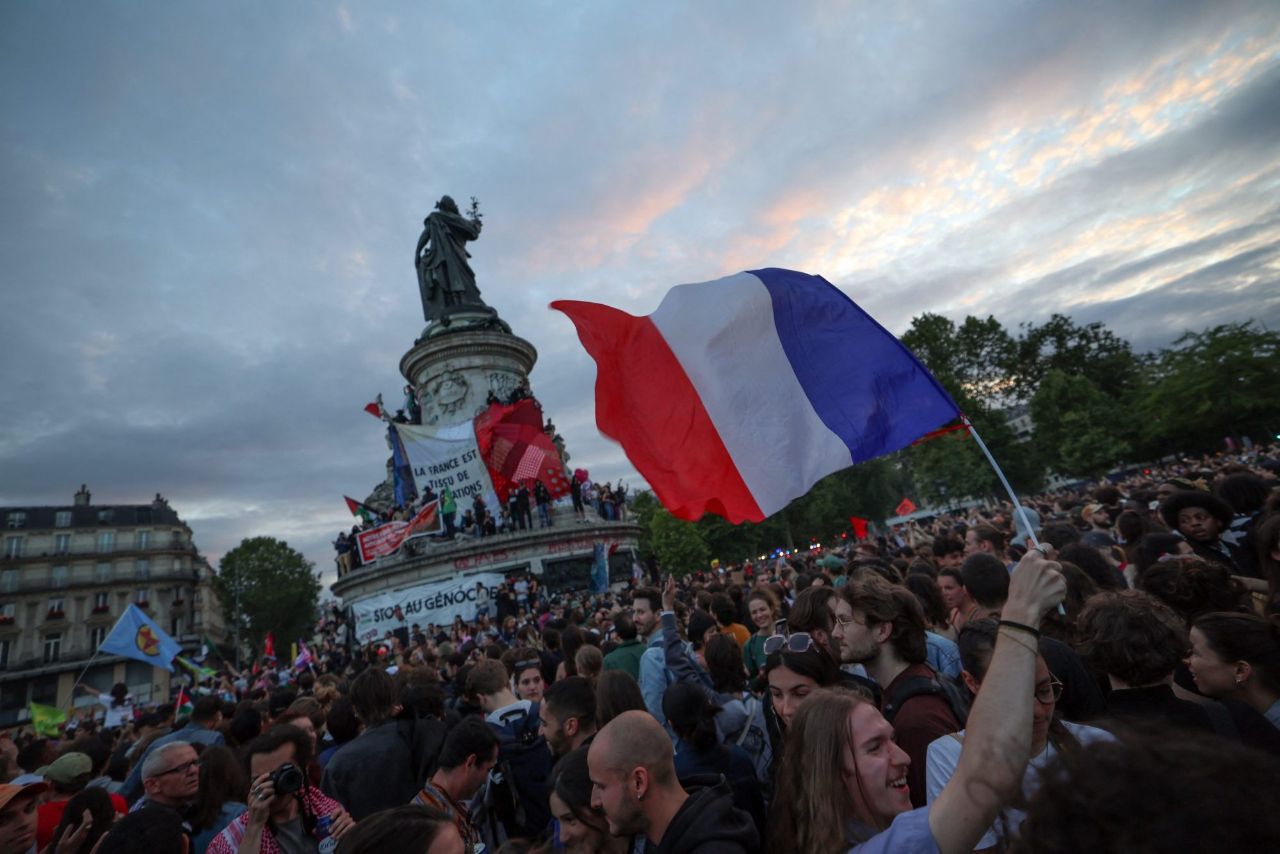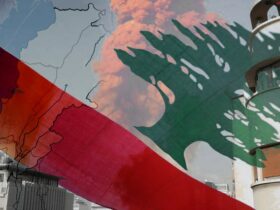By Ali Rıza Taşdelen
The previous French government failed to finalize the 2026 budget and eventually collapsed. The newly formed Lecornu administration now faces the same fundamental challenge. So far, any government formed seems incapable of producing a budget that doesn’t rely on “austerity measures” as the solution.
Yet they are up against a massive public outcry. French workers and people have risen once again, making their presence felt in the country’s politics.
On September 10, the French took to the street with the slogan “Let’s block everything” (Bloquons tout). Participation was reported to exceed 200,000. Bruno Retailleau, the Interior Minister under the Bayrou government, said that 80,000 police and gendarmes were deployed.
Then, on September 18, the French rose again, this time joined by strikes in the rail, aviation, and education sectors. Official figures indicate over 500,000 participants. The organizer CGT union said that more than one million people took part in demonstrations across France.
UWI author Ali Rıza Taşdelen witnessed the protests on the ground and wrote his observations and views.
Reminiscent of the Yellow Vest movement
Following calls on social media, on September 10, the French expressed their anger and demands under the slogan “Let’s block everything” (Bloquons tout). Eight days later, on Thursday September 18, a nationwide general strike, rallies, and marches were held across France, organized jointly by the country’s leading unions (CGT, CFDT, FO, CFE-CGC, CFTC, Unsa, FSU, and Solidaires) effectively bringing life to a standstill.
Bruno Retailleau, the Interior Minister of the Bayrou government, which was ousted in a confidence vote, said that 80,000 police and gendarmes were deployed, just as they had been for the September 10 protests. During the demonstrations, drones were used to monitor protesters from above. Despite the heavy security presence, demonstrators sought to make their voices heard peacefully.
Marching crowds have always been a “headache” to governments that act against the public. Authorities often try to portray protesters as violent and aggressive in the media. In the end, security forces reportedly attacked demonstrators with batons and tear gas to supposedly disperse them. That is a scenario reminiscent of the Yellow Vest movement. And indeed, history repeats itself.
For over 30 years, I had the opportunity to closely follow student and worker protests, and trade union struggles in France. The last major protest I participated in and observed was the Yellow Vests Movement of 2018-2019. Macron had been in power for a year and a half. But he did not have a program that would solve the economic and social crisis France was facing. Like his predecessors Nicolas Sarkozy and François Hollande, Macron was a globalist and pursued the same neoliberal agenda which has been the very path that ultimately brought down those before him and pushed them off the political stage. The only difference was that back then he enjoyed a solid majority in the National Assembly, which at least gave him some stability. Today, lacking that parliamentary majority, two minority governments have already collapsed in the past year, and a third seems headed for the same fate.
In the fall of 2019, right after, or better alongside, the Yellow Vest movement, the unions launched their campaign against the pension reform. That reform essentially meant working until the grave: it would have raised the early retirement age from 62 to 64. “Early” because the standard retirement age was 67. In any case, before the bill passed, I retired at 62 and returned to Türkiye six years ago.
Like many Turkish families, our children grew up there, went to school, got married, and had kids of their own. Cutting ties with France completely is impossible for us. We visit a few times a year to see our children and grandchildren. This time we were visiting during mass demonstrations. I missed it.
Grandfather and granddaughter march hand in hand
I went to the demonstration with my youngest granddaughter, Damla. She is in her final year of high school. Like many of her peers, she wanted to take part.
Protests were held across France. We joined the one in Bourg-en-Bresse, where my children live. It’s the country’s largest city by land area with a population of about 700,000. The march was set to begin in front of the prefecture building. By the time we arrived, around two thousand demonstrators had gathered, dressed in colorful union vests. Food and drink stalls were set up, loudspeakers blared speeches, and slogans rang out in unison. It felt like a festival. Soon, the march got underway with the same lively energy.
I stepped aside to join a live broadcast on Turkish TV channel Ulusal Kanal. Damla kept marching. Later, my other grandchild, Arda, also came to join. When they got home, they told me how the police had flooded the area with tear gas at the end of the march. Damla had filmed it. She showed me the video and said: “We didn’t do anything, grandpa. We were just sitting together when they suddenly started firing gas. My eyes were burning.”
On both September 10 and September 18, demonstrators directed their anger squarely at President Emmanuel Macron. The slogan and banner of every rally and march was “Macron resign.” Of course, the other target was the 2026 budget prepared by the government that had just collapsed on September 8 after losing a confidence vote in parliament.
Drowning in debt
France is drowning in debt. After Greece and Italy, it has the highest level of public debt in Europe. The government can no longer pay down the principal, it borrows again just to cover the interest.
Last year, the 2025 budget drafted by the minority government headed by Michel Barnier was met with fierce opposition and fell within three months after a no-confidence vote. The next minority cabinet, led by François Bayrou, also tied its fate to the 2026 budget. Fearing it couldn’t pass, Bayrou sought a vote of confidence, lost, and the government collapsed once more. Again over the budget…
Macron’s France has essentially lost the ability to pass a budget. The crisis had been building before, but under Macron it has reached new depths. Nearly one-third of the country’s current public debt, which amounts to more than one trillion euros, was accumulated in his seven years in office. His aggressive, pro-American policies during the Ukraine war like sanctions on Russia, arms and ammunition sent to Kyiv triggered an energy crunch that fueled inflation, soaring living costs, layoffs, and in turn, a broader social crisis.
The numbers speak for themselves: €3.3 trillion in public debt, €60 billion in annual interest payments, a budget deficit surpassing €170 billion, and a stagnant economy with growth below 1%. Industrial investment has stalled. Farmers and workers are struggling. The unemployed and retirees are officially classified as “poor” in state statistics. According to a report published this year by the French statistics institute INSEE, 10 million people now live at the poverty line.
The capitalist–imperialist system has reached a dead end. It offers no remedies for the crises it produces. This has been the case since the early 2000s. Bayrou had proposed €44 billion in spending cuts in the new budget. The plan was to make workers, retirees, and the poor shoulder the burden by slashing public spending. Health, education, and social programs would all be cut. For instance, health expenditures alone were to be reduced by €5 billion. Meanwhile, the same budget increased military spending by €4 billion, supposedly to counter the “Russian threat”. And in 2026, public sector workers and retirees would see no pay increases at all. In short: austerity.
Another main demand of the unions is the repeal of the pension reform that the government rammed through in 2023 using Article 49.3 of the Constitution and bypassing parliament, and the restoration of the retirement age to 60.
“We will not accept a budget where workers alone foot the bill”
Ahead of the march on September 18 in Paris from Place de la Bastille to Nation, CFDT General Secretary Marylise Léon told reporters: “Today, we are sending a very clear warning to the government and to Sébastien Lecornu. The message is simple: we will not accept a budget where workers alone foot the bill.”
CGT leader Sophie Binet said: “The anger is enormous. So is the determination. The budget must be written in the streets. Otherwise, it will be Lecornu who ends up thrown into the streets.”
Le Monde spoke with Muriel, a health sector worker: “With all the cuts, like in public hospitals and across healthcare, I worry that we can no longer guarantee decent treatment for everyone, beds and emergency units are being shut down.”
Student union UNEF Vice President Salomé Hocquard added: “Many young people are being shut out of higher education simply because there aren’t enough spots in undergraduate and graduate programs. Conditions are deteriorating. Online lectures are expanding, and lab instructors have to scramble to find enough chairs so students can even sit.”
The chain of protests was set in motion after the prime minister unveiled the contents of the draft 2026 budget. On September 10, the call to “Let’s block everything” (Bloquons tout) was launched, followed quickly by the joint strike appeal from all major union federations for September 18. Although the government fell on September 8 after losing a no-confidence vote, the protest plans were not abandoned. On September 9, President Macron tapped a new prime minister from his own camp to form a government. Yet before new Lecornu could even get his cabinet together, he was already staring down strikes and demonstrations.
Floodgates unleashed
On September 10, following calls spread over social media, half a million people took to the streets. Protests broke out across the country, from Paris, Lyon, and Marseille to Bordeaux, Lille, and Toulouse. In total, gatherings were held in 550 locations nationwide, including small towns and villages. Demonstrators erected 262 barricades on highways, intersections, city streets, and outside government offices.
Compared to 10 September, the rallies and protest marches held alongside the strikes on September 18 were more disciplined. This was because the unions were at the forefront of the protests. The protests began in a festive atmosphere everywhere and continued peacefully. Except for anarchists and some “troublemakers”, the police provoked the protests with unnecessary interventions. Protesters clashed with police in Marseille, Lyon, Toulouse and the Brittany region.
In Paris, the trade unions’ march began at 2.30pm at Bastille Square, passed through Republic Square (Place de la République) and ended at Nation Square (Place de la Nation). By the time they reached Nation Square, there were more police than protesters in the square. The square was obscured by the smoke from tear gas canisters.
Participation in the demonstrations and marches on 18 September was particularly high among public sector workers. Teachers had the highest participation among public sector workers. Shopkeepers and freelancers were also present. Ninety per cent of pharmacies were closed. Actions took place at 260 locations.
One notable thing was the strong participation of young people. Students set up barricades in front of high schools.
September 10 opened the floodgates. By September 18, the protests had gained even greater momentum. There’s no stopping the people now.

















Leave a Reply